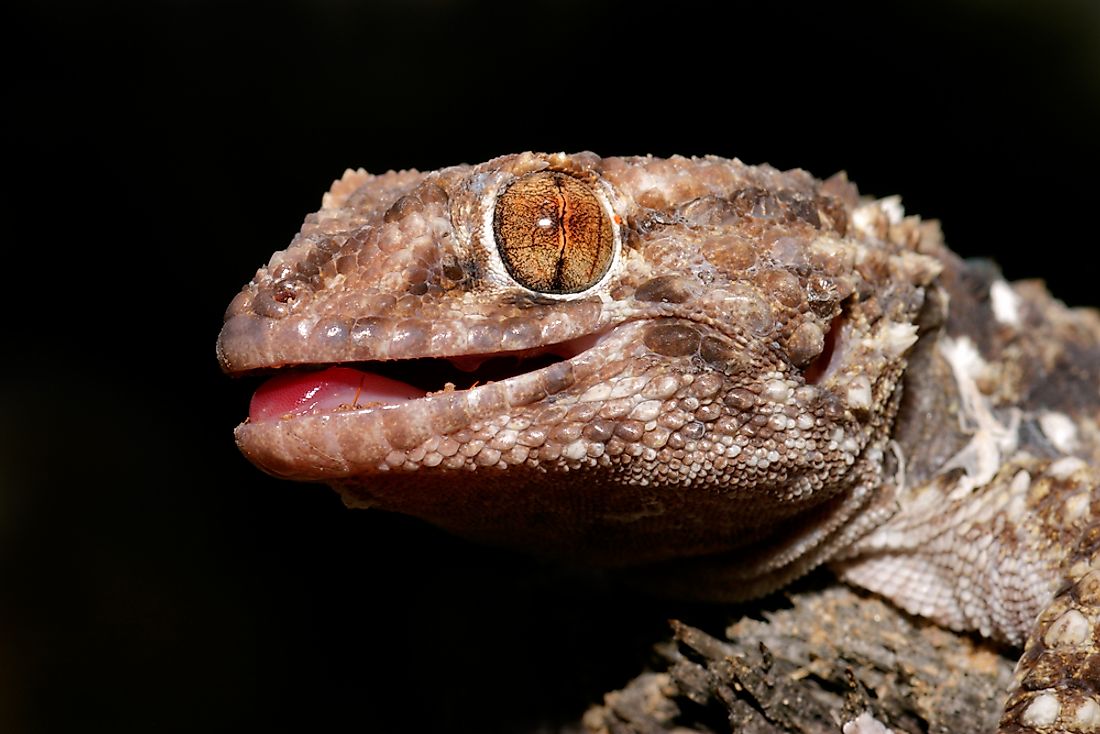Native Reptiles Of Namibia

Namibia has five biomes with different characteristics and habitats that provide suitable environments for a number of reptiles. Namibia has about 250 species of reptiles, 59 of which are endemic. These reptiles include chameleons, turtles, lizards, tortoises, crocodiles, geckos, skinks, terrapins, and worm lizards. Some of these reptiles are protected within Etosha National Park and Namibia Naukluft Park.
Native Reptiles Of Namibia
Bibron’s gecko (Pachydactylus bibronii)
The gecko is endemic to Southern Africa. The gecko is medium sized with a stocky build and a body and tail length of 6-8inches. Females are generally smaller than males. The dorsal body has beaded patterns with black crossbars, and a white belly which may sometimes be light brown. The gecko is arboreal and territorial and spends most of its time on the ground where it forages for insects. Females lay two clutches per reproductive season.
Cape skink (Trachylepis capensis)
The cape skink is endemic to the southern parts of Africa and is distributed in Botswana, Namibia, and Zambia and probably in Zimbabwe. The skink has a large, elongated, stickily-built body with an olive brown colour and a grey-white belly. The skink has short limbs. The cape skink is a shy animal that tends to spend most of its time hiding under small tunnels it has burrowed or any other shelter. Snakes, domestic cats and the fiscal shrike are the primary predators of the Cape skink. The skink gives birth to on average a litter of 12 live juveniles.
Luderitz dwarf viper (Bitis xeropaga)
The dwarf viper is a venomous viper endemic to Namibia and Cape Province, South Africa. It occupies mainly mountain slopes and rocky hillsides in its habitats from where it feeds. The viper’s diet is composed primarily of lizards and mice. The viper can live for five to ten years. Its popularity as a pet among snake keepers is likely to threaten its population.
Large-scaled gecko (Pachydactylus robertsi)
The large-scaled gecko is an oviparous gecko native to the Great Karas Mountains of southern Namibia. The gecko has a light olive-brown body color which is darker on the upper parts and lighter on the head, underparts, throat and limbs. The head is broad, depressed and elongated with a wider neck and pointed snout. The gecko is likely to be threatened by habitat loss due to its limited distribution in its habitats.
Conservation efforts
Namibia is one of the few countries that has included environmental and biodiversity conservation in the constitution. Since the country depends on the fragile and sensitive environment for tourism, conscious efforts have been made by governmental and non-governmental bodies to conserve the environment and its biodiversity. The conservation efforts target all flora and fauna. Reptiles native to Namibia include the cape flat lizard, Nama padloper tortoise, Caprivi rough-scaled lizard, Namib sand gecko, marbled leaf-toad gecko and Smith’s sand lizard.
Native Reptiles Of Namibia
| Native Reptiles of Namibia | Scientific Name |
|---|---|
| Bibron's Gecko | Pachydactylus bibronii |
| Cape Skink | Trachylepis capensis |
| Luderitz Dwarf Viper | Bitis xeropaga |
| Large-Scaled Gecko | Pachydactylus robertsi |
| Cape Flat Lizard | Platysaurus capensis |
| Nama Padloper Tortoise | Homopus solus |
| Caprivi Rough-Scaled Lizard | Ichnotropis grandiceps |
| Namib Sand Gecko | Pachydactylus rangei |
| Marbled Leaf-Toed Gecko | Afrogecko porphyreus |
| Smith's Sand Lizard | Meroles ctenodactylus |







